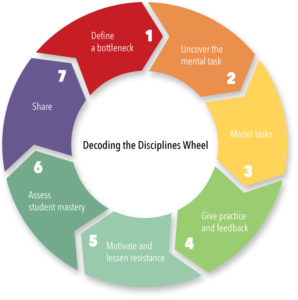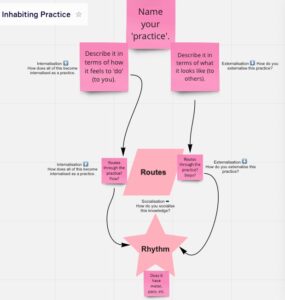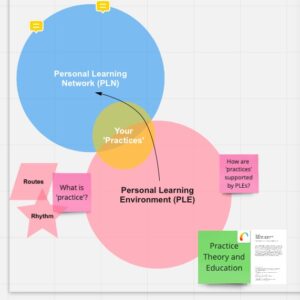This week, I have been learning about how we can look at the process of moving from knowledge to action.
Throughout the previous week, I have focused on examining and exploring my ‘Open Learning in Practice and Planning for Learners. I started from a personal perspective, thinking about my art open learning in practice, who produces, designs, shares and researches open educational practices, considering who they are for and who used them. Meanwhile the aims of this course can be seen to be directly in line with those often associated with the educational turn, of widening access/broadening participation in art, aims that precede and exceed this ‘turn’ and relate and/or diverge with wider attempts historically and presently at widening participation in further and higher education globally through the expansion of open learning. Who is ‘opening access’, and for whom? What is the context, and in what ways is artistic learning closed/narrow that we would seek to broaden participation in it? What is artistic learning?
In addition, I have been keen to encourage me to explore how to plan for my learner issue, not only to deepen my knowledge of the issue but also to think about how it is connected to wider, more practice structures. I then started to discuss the wider critical context for open learning, open educational practices and open educational resources in terms of who produces them and who they are for. And I reflected on some issues about what learning experiences would you like to plan for and why? How will you organize the learning experience through time, space, materials, bodies, modes of communication and individual / paired / group activities? How, where and with whom do you plan to share what happens?
During week seven open learning, I firstly was designing about who are learners? What do they do? I needed to consider how they invite ‘learners’ into their practices and co-create practices with ‘learners’ to develop a modifiable ‘Tool/kit’ plan. Furthermore, I have been taught the Scholarship of Learning and Teaching (SoTL) model called ‘Decoding the Disciplines’ (DtD) developed by Joan Middendorf and David Pace at Indiana U, USA.
I was trying to go through a good Ouroboros model, making sure that I got the right art practice model and combining the SECI and DtD approaches. I think I went through the art Practice + SECI + DtD Structured framework too rigidly; I assumed that by designing each question on the list in the order they were displayed, I would conduct a good art practice model. That’s why I kept checking my notes – I felt afraid that I would miss something despite having learned and practised the framework with my course friends. Overall, I was really nervous and afraid of making mistakes. This made me uncertain, and that’s why I wanted to stick fully to the template. My supervisor then gave me feedback. He told me that while my intention of getting all the questions of the Practice model framework correct was good, I need to treat each art practice as an individual case and use the framework to inform my decisions.
https://miro.com/app/board/o9J_lnn0K-E=/






Leave a Reply